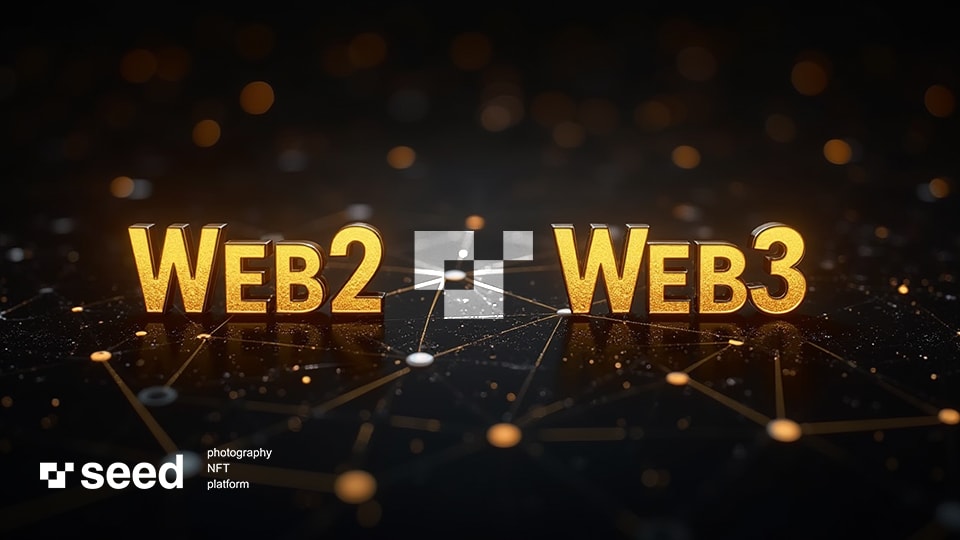Rethinking the Digital Space
The evolution from Web2 to Web3 marks a shift from corporate-controlled systems to user-centered frameworks. In Web2, data is held by a few dominant platforms. Web3 introduces decentralization, restoring control to users and promoting trust through code rather than authority.
From Centralized to Decentralized
Web2 operates on centralized infrastructure, creating privacy and control challenges. Web3, on the other hand, uses peer-to-peer systems like IPFS, distributing power and reducing single points of failure.
Web3 in Practice Data Control: Users own and manage their personal information rather than handing it over to centralized platforms. This allows for more privacy, security, and informed choices about what is shared and with whom. Open Participation: Platforms built on Web3 do not require approval or gatekeeping to use, making access more inclusive and globally available. Built-In Trust: Trust is embedded in the design of the system, cryptographic protocols and smart contracts ensure fairness and transparency without needing tRebuilding the Internet: From Central Control to User Ownership Rethinking the Digital Space
The evolution from Web2 to Web3 marks a profound shift in how we use, manage, and interact with the internet. In the Web2 era, the digital landscape has been dominated by a handful of large corporations. These companies control user data, dictate platform rules, and often prioritize profit over privacy. By contrast, Web3 represents a movement toward decentralization — restoring control to users, embedding trust in technology itself, and removing the need to rely solely on central authorities.
From Centralized to Decentralized
Web2 operates on centralized infrastructure, meaning that a small group of servers and administrators handle the majority of activity. This creates risks: if the central system is compromised, millions of users are affected. Web3 changes this model entirely by using peer-to-peer systems like IPFS (InterPlanetary File System), where data is distributed across multiple nodes. This reduces single points of failure and places more power in the hands of individuals rather than corporations.
Web3 in Practice Data Control: In Web3, users own and manage their personal information rather than surrendering it to centralized platforms. This increases privacy, security, and the ability to choose exactly what to share and with whom. Open Participation: Web3 platforms are designed without gatekeeping. Anyone with internet access can participate, making them more inclusive on a global scale. Built-In Trust: Through cryptographic protocols and smart contracts, trust is embedded in the code itself. This ensures fairness and transparency without needing to depend on corporations or moderators. Tackling Web2’s Shortcomings Data Security: Decentralized storage spreads information across multiple nodes, making it much harder for attackers to access or manipulate large datasets. Transparency: Blockchain technology publicly records all transactions, making it possible for anyone to verify activity. This discourages fraud and holds users accountable. Smart Contracts: These are self-executing agreements that automatically enforce terms. They’re already revolutionizing industries like finance, supply chains, and digital services by removing unnecessary intermediaries. A New Era for Finance and Creativity
Decentralized finance (DeFi) offers banking-like services — lending, borrowing, and trading — without the need for traditional banks. Users can transact directly with each other, often at lower costs and faster speeds. In parallel, non-fungible tokens (NFTs) have opened new revenue streams for artists and creators. By selling or licensing their work directly to their audience, they bypass traditional publishing or gallery systems, keeping more of the profit for themselves.
Bridging the Divide
One challenge of Web3 adoption is that most of the world still operates on Web2 infrastructure. Technologies like Ethereum’s Virtual Machine (EVM) help bridge this gap by allowing developers to integrate blockchain features into existing systems without rebuilding them from scratch. This kind of interoperability is key to making Web3 practical and appealing for mainstream use.
Challenges Ahead
Despite its promise, Web3 is not without obstacles. Scalability remains a major concern — as blockchain networks grow, transaction speeds can slow down and fees can increase. Additionally, the average user may find blockchain concepts intimidating, which slows adoption. Education and user-friendly interfaces will be essential to making Web3 as accessible as Web2. Regulatory uncertainty also plays a role; governments are still deciding how to handle decentralized platforms and digital assets.
Why It Matters
The move from centralized to decentralized systems isn’t just a technical upgrade — it’s a cultural shift. It changes how people relate to technology, to each other, and to the organizations that once controlled online life. In a Web3 world, individuals have more autonomy, communities have more influence, and the internet becomes a shared resource rather than a product owned by a few corporations.
The Road Ahead
Whether Web3 will fully replace Web2 or simply coexist with it remains to be seen. However, its vision of a more open, secure, and user-owned internet is already reshaping the way we think about digital interaction. As more people experiment with decentralized platforms, the pressure on traditional systems to become more transparent and fair will only grow.
The future of the internet may very well depend on how quickly and effectively we embrace this transformation. In shifting from central control to user ownership, we have the chance to rebuild the digital world in a way that reflects the values of freedom, collaboration, and shared responsibility.

